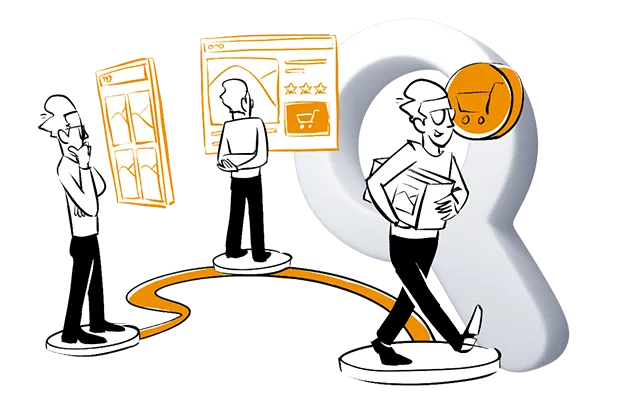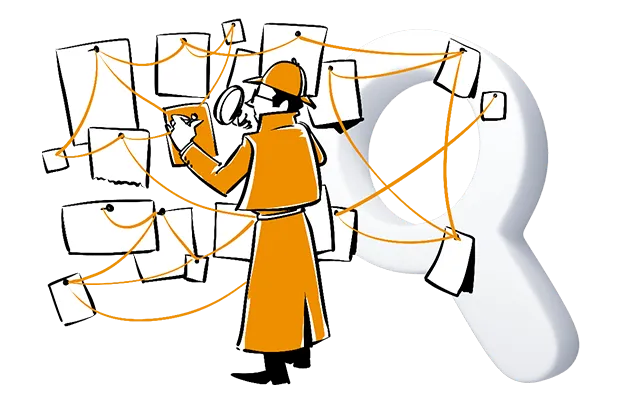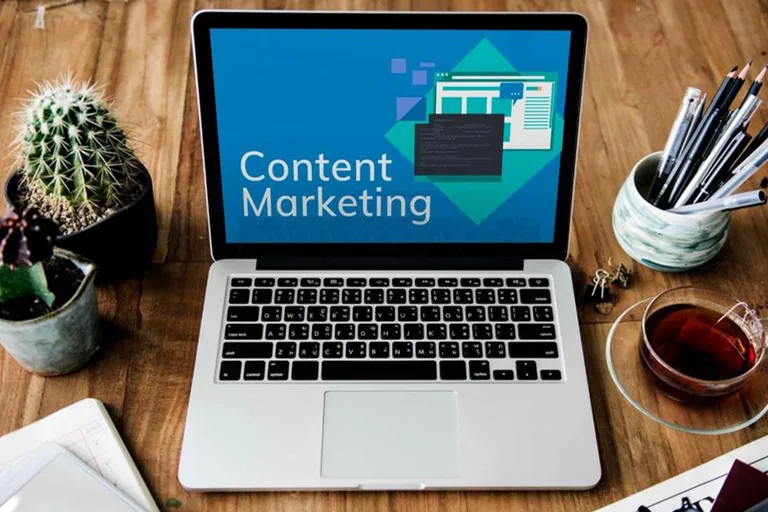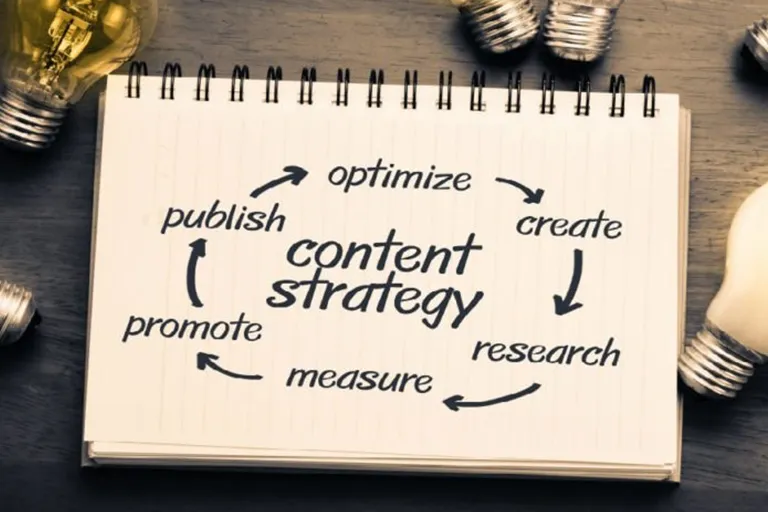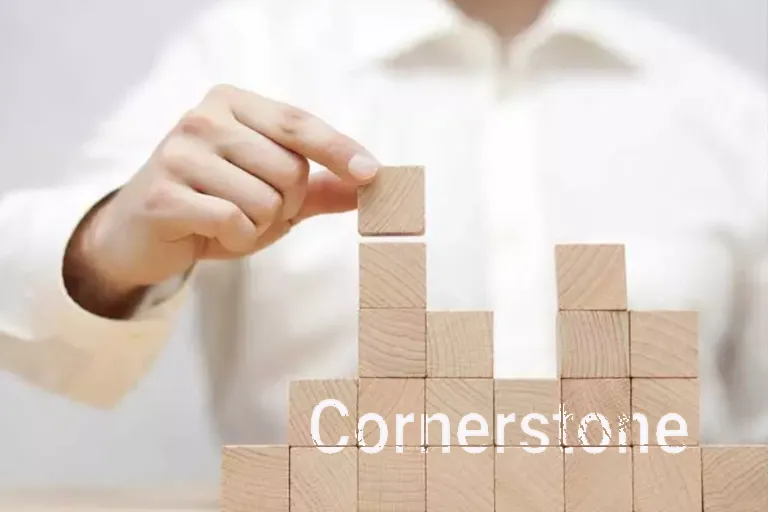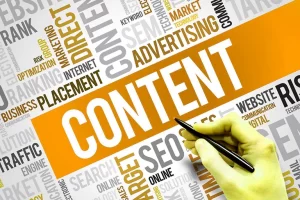Content can also be considered as a commodity or product and analyzed. Many tips and principles that are mentioned under the titles of production process and marketing management and pricing principles and strategy for goods and products in general can also be used for content. Among these concepts is the valuable content life cycle discussion, which can be very valuable and inspiring for content producers.
In this article, we review the six-stage model of the content life cycle together. These six steps are as follows:
- Pre-production stage (Conception Stage)
- Creation Stage
- Publishing stage
- Promotion stage
- Maintenance and update stage (Content Maintenance)
- Content Retirement Stage
In the following, we examine each of the stages of the content life cycle in more detail.
Stages of the content life cycle
There are 6 main stages in the content life cycle, which we will describe each of them in order:
1- Pre-production of content
Content can be produced with different motivations. The following are just examples of content creation motivations:
- Introducing a product or service
- Introducing or establishing a brand , product, person or organization
- Notification about an event, discount, festival or exhibition
- Increasing the satisfaction of existing customers
- Increase customer loyalty
- Convert potential customers into actual customers
- Increase brand awareness
- Keeping the site or social network account active
- Attract more audience through search engines
You can add dozens more to the above list. But the important thing is to remember, it is generally not possible to provide a large number of the above objectives with a specific content.
It is appropriate to remember the limitation of the frog in this regard, because no matter how strong the frog is and how far it jumps, it still cannot jump in several directions in one jump.
This discussion of ours definitely has buts and ifs and exceptions. But the main point is to remember that when a content is supposed to serve multiple goals, conflicts may arise between these goals and cause this content to be in its infancy and before growth and maturity and promotion. In the audience, die and perish.
Therefore, in the pre-production stage, it is appropriate to write a list of goals related to a content or a content package and make sure that the goals we are considering are aligned with each other and do not conflict.
Conflicting content
Consider this example of conflicting content:
Franvin Engineering Holding, as a leader in design and engineering services, offers its condolences on the days of Fatemiyah.
The above content, which can be a post on Facebook or Instagram, or a piece of writing on the wall of a company or a banner on top of a website, is obviously a conflicting content.
It is clear that the producer of this content intended to express his condolences for the Fatimid days. But he didn’t want to advertise himself as a leader.
Or maybe he wanted to say that he was a leader, but because of the religious occasions parallel to the preaching, he also included condolences in his preaching.
These two messages can be valuable and successful independently. But next to each other, it is clear that they conflict and create distrust.
It happens that the fate of many produced contents is known even before the release, and it can be assumed that they will not go through the life cycle in a desirable and appropriate way.
2- Content production
The stage of content production can be considered a technical work.
Depending on your strategy and the target audience, the content may be in the form of text, video, advertisement report, email, advertising banner, audio file, Instagram post, Telegram message or any other form.
Naturally, each of them has their own considerations that can be discussed independently.
3- Publishing content
The next step is publishing the produced content.
You choose a number of communication channels with the customer and decide which channels the content reaches the customer.
The following are examples of conventional channels in our country:
- blog post
- Reporting on news sites
- Post on social networks like Instagram and Twitter
- Content on other social platforms such as Telegram and Aparat
- Advertisement teaser on radio and television
Pay attention to the fact that each channel has its own costs and will have achievements corresponding to its costs.
You may also decide to use certain content only on certain channels.
For example, a movie that is uploaded in Aparat may not be suitable for Telegram because of its size or the type of audience.
Or the content published on Instagram should not appear on the blog.
Or the material that is placed on the company’s website should not be sent to others.
After all, once the content leaves your computer and the first person outside of your collection receives and sees it, the publishing stage has effectively begun.
4- Content promotion
Content promotion is the next step in the product life cycle.
You want to make sure that the content produced is received by as many people as possible in the target community:
- You may introduce your blog post on Instagram.
- You may advertise your post on Google or other popular sites.
- You may publish the video of your interview with radio and television in cyberspace.
- You may distribute ten minutes of a two-hour audio file on Telegram for free.
- You may publish behind the scenes of a movie in different spaces to promote the movie itself as a piece of content
- You may inform about your content in an email.
The skill of content promotion is considered a basic skill in content production and marketing .
5- Modifying and updating the content
Remember that content is not meant to last forever. It may need to be edited or completed for any reason. Maybe it is necessary to add other content to it. Or parts of it are removed, which is called content modification and updating.
Naturally, the amount of content modification and updating may vary depending on your activity.
But one thing is for sure that the useful life of the content is largely dependent on the time you put in to modify and update it.
6- Removing and discarding content
Any content will serve you for a while and eventually it has to be retired one day. This situation is similar to the fate of a machine on a factory production line or the wear and tear of any other tool at your disposal.
You may throw it away completely, or you may use parts of that device for other tasks, or you may hand over the device to another collection.
The same goes for content.
A temporary post on social networks is an example of planning to retire content at a certain time.
One of the signs of being professional in content creation is having the tolerance to retire content.
You rarely see a content producer who can simply delete old or expired content or take the time to delete it.
But if you follow the content strategy in a professional way, you should spend time and energy for this too.
Of course, it is obvious that this work requires spending your time and resources, and it is up to you to determine the appropriate level based on cost-benefit analysis.
In the end, I would be happy if you share with us your experiences regarding the content life cycle and how to use it.



